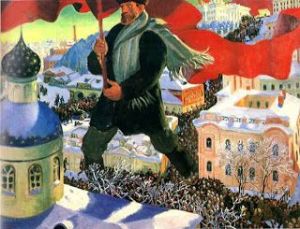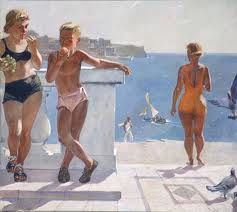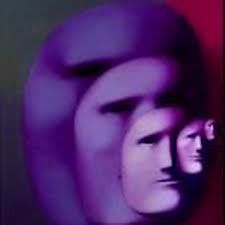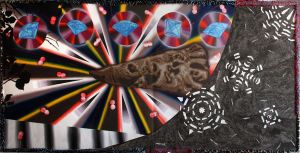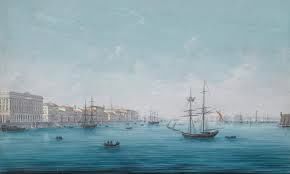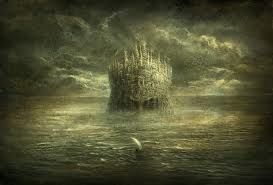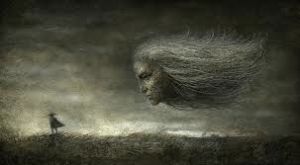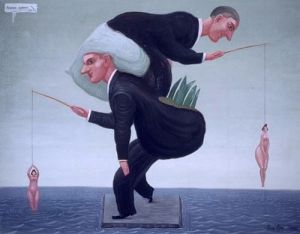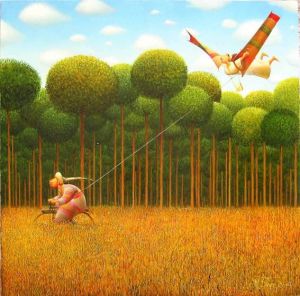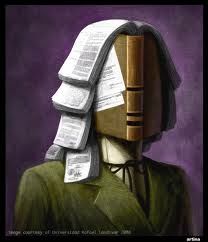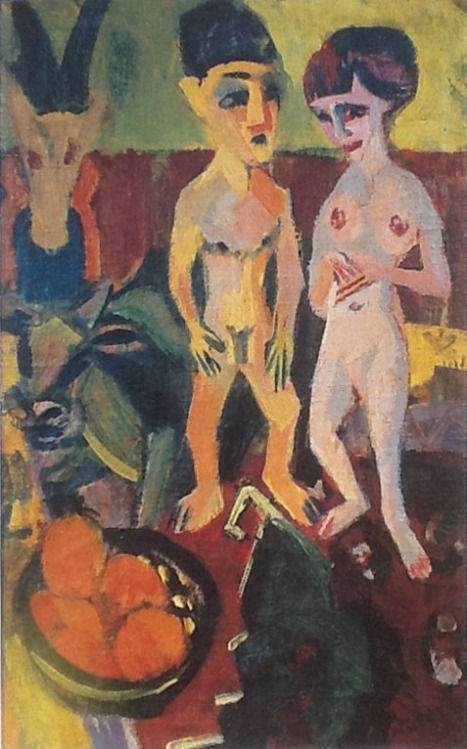
In every painting there is a story that extends beyond its maker; its time period or the movement in art it represents. Its story is about the interaction between artists; the social and political environment of the time when it was executed; and the circumstances surrounding its acquisition. Where a painting’s provenance is of continuous ownership over a period of more than half a century its history is bound up with the vision of its collector and the changing times of the collector’s own environment.
Two expressionist paintings by the Dutch artist Jan Wiegers, executed in the early 1920’s in Frauenkirch, Davos are to be auctioned in November in Johannesburg, South Africa. The current owner, himself a collector, inherited the paintings from his father, a Bloemfontein doctor Dr. F.P. Scott. Dr. Scott bought the paintings in 1940 in Groningen, Holland where he was studying medicine. His purchase was remarkable because despite exposure while in Groningen to the avant-garde in Europe, his visual repertoire since childhood had been influenced by Calvinist puritanism where Dutch Reformed churches are devoid of any decoration.
Art in South Africa was likewise conservative and devoid of human emotion. Yet he acquired deeply emotive works and at a time when Expressionism was no longer fashionable and in fact politically incorrect in Europe.
The two paintings by Jan Wiegers are: “Haus in den Lärchen” and “Still Life with Sculptures” They are pivotal works because in their style and content they confirm Wiegers’ relationship with Ernst Ludwig Kirchner, founder of the group “Die Bruke”, in Dresden, who adopted a new form of art called Expressionism. The impact of Kirchener on Wiegers would result in German Expressionism making its way to Groningen and impacting members of Wiegers own group “Die Ploeg.”
The acquisition of Wiegers’ work twenty years later would, with the return of the doctor to South Africa after the Second World War, be inspirational to a new generation of artists working in the Orange Free State who challenged existing norms in South Africa and introduced personal innovative ways to create art with distinct artistic styles and philosophy pushing South African towards the avant garde.
The aesthetics of South Africa in the formative years of Dr. Scott’s education was one where the most pleasing art was that which depicted the changing moods of the land; of mountains, valleys and seascapes devoid of human beings. A leading artist was Jacobus Pierneef known for his formalized and ordered view of the landscape.
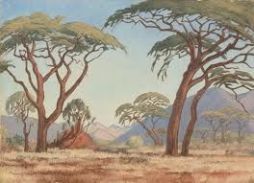
The only other forms of art deemed acceptable were Edwardian portraits and sporting paintings, which were favored by the new millionaires in Johannesburg. These “Rand Lords” had made their money on the diamond fields and in the gold mines and sought to announce their social ascendancy by mimicking British taste in architecture, interior design, and art collecting.
The frictions that had led to the Boer War were still in the air in these early years of the South African Union. British and Afrikaner clung to their own distinct social identities and art making was acceptable only if it was “safe” – that nothing in it challenged the status quo. Some artists had gone abroad to study and absorbed Cubism, Fauvism, Expressionism and Surrealism such as Maggie Laubser and Irma Stern but their art was regarded as crude and insulting. It is a long leap from this ordered unemotional visual canvas to Expressionism.
What would lead Jan Wiegers, who having trained in Groningen where he excelled as a sculptor, painter and printmaker, to adopt a new unique style of painting in 1920 started in Dresden in 1905. Inspired by the brilliant colors and distorted forms of the Post-Impressionists and then the Fauves as well as by peasant art and primitive art, artists in Dresden led by Kirchner; broke from the classical and mythological painting meant to uphold the majesty of the Kaieserrreich. Influenced also by German woodcut painting they used jagged lines for their forms and adopted a colour palette of harsh brightly coloured pigmentation – meant to evoke deep inner emotion to the viewer. But expressionism and emotive feeling had always been part of the German psyche.
Its embryonic forms can be recognized in the physical and spiritual suffering depicted in Grünewald’s’Crucifixion’.
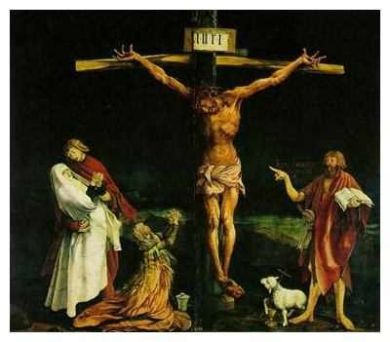
All that differed with the Expressionists was that they sought to evoke this heightened emotion through a new art language and subject matter. Dresden like other German cities had become crowded with city dwellers. It presented a 20th century reality of new modern life and pulsated with the movement of peoples, trolley cars and atomized machinery.
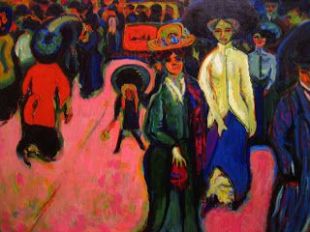
Artists peered into the ugly underbelly of city life where decadence emanated from nightclubs and surrounding streets inhabited by prostitutes and dancers. Breaking from the old social order allowed for a new freedom if lifestyle, one distinctly bohemian. Artists lived openly with their girlfriends and the nudes in their pictures were their lovers who they captured in casual poses and expressed with blatant sexuality.
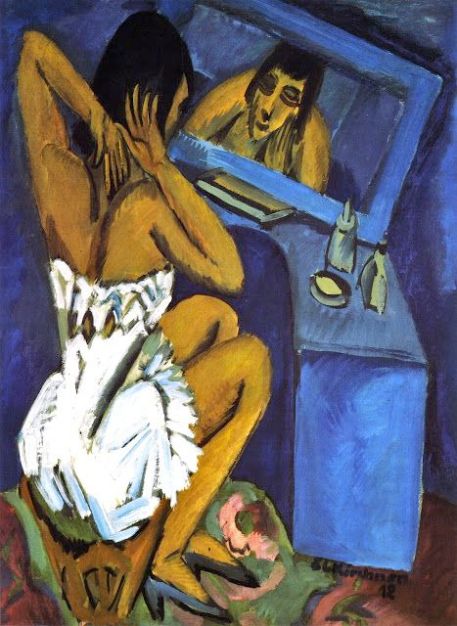
It was this stylistic convention of emotive feeling, harsh colors, jagged lines, sharp juxtaposition of colors and fragmentation of form that Kirchner took with him to Davos in 1920 when he retreated to a sanatorium to recover from the horrors he had seen as a soldier in World War One. Plagued by bronchial inflammation Wiegers, with money raised by his artistic colleagues, arrived at the same sanatorium and the two men struck up a friendship that would last until Kirchner’s death in 1938. Wiegers was immediately attracted to Kirchner’s expressionism as is demonstrated below.
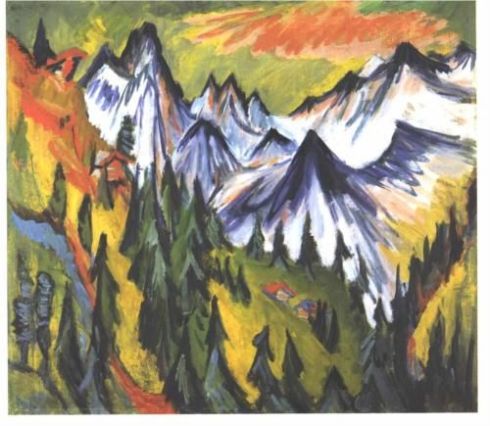
This is very close in style and subject matter to the work of Wiegers in 1921. Wiegers rented a house in Frauenkirch close to Kirchner. His landscape would be the first painting Dr. Scott would acquire in 1940 – “Haus in den Lärchen”.

The landscape painting is most likely a view from the side of the Kirchner’s house capturing the stable and to the right, part of the roof of the “Haus in den Lärchen” where Kirchner lived, with what appears to be the Seehorn Mountain in the background. With is sharp ascending and descending lines and bold juxtaposition of bright green yellows pinks and reds the painting appears dangerous and confrontational.
The second purchase made by Scott in 1940 is “Still Life with Sculptures” painted in 1921.
In retrospective analysis of the work the interpretation given is that this was most likely painted by Wiegers in Kirchner’s house, as the three wooden sculptures depicted are works carved by Kirchner depicting his girlfriend Erna Schilling. Further evidence that the nude sculpture was with Kirchner at the time when Wiegers painted the present work is evident in the photograph of the dancer Nina Hard who was Kirchner’s guest during the summer of 1921.

In a personal communication Wiegers confirmed that this painting was painted during 1921 and that he mixed his oil paints with paraffin to execute the work. The picture again is very close to Kirchner’s own depiction of nudes and to his colour palette.
Scott recounts that he found this painting in Galis coal shed after returning one day from work. There is no doubt Galis knew the work was important and one has to look at the social and political climate of Holland at the time to understand why Galis was about to burn it.
The Nazis invaded Holland on May 10th 1940. The goal of the Nazis as a totalitarian regime was a populace that did not think for itself and was therefore easy to control. Any expression of a person of his existence as a particular individual with particular traits, rather than as a member of a group was seen as a threat to the power and security of the state. It is not surprising therefore that they mounted an attack on modern art, which they banned, firing its practitioners from their jobs and sometimes forbidding them to work. Almost all members of Die Bruke as well as other leader of the avant garde to include Otto Dix in 1933, Max Beckmann in 1937; Erich Heckle and Emil Nolde had their works confiscated and destroyed and were forbidden to practice art. A five-man commission toured German museums, confiscating modern works; more than 16,000 were seized, some to be put in storage, some sold abroad, and many thousands burned. In 1937 about 650 such works were presented in an exhibit in Munich titled “Degenerate Art”. Kirchner was included in the exhibition. Kirchner’s suicide in 1938 could only have been occasioned by the attack against his art and inability to carry on painting.
When the Nazis invade Holland the presence of Wiegers nude bodies in his studio endangered Galis’ own career as an artist. News of what had happened to artists in Germany would have traveled to Holland and Galis could not chance owning a nude expressionist painting – he had to destroy it. It must have come as a relief that Scott found it and approached him to purchase it
Dr Scott returned to South Africa after the war and eventually settling in Bloemfontein he supported an encouraged artists of the Orange Free State to form The Bloemfontein Group in 1958. and their work eventually led to his forming the F.P. Scott Trust and this became the basis for the development of an Art Museum for Bloemfontein.
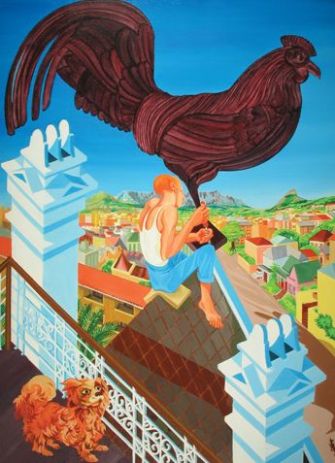 Marianne Podlashuc
Marianne Podlashuc
All good art presents some point of view, a vision of the world or an alternative world. But not all art is, in the narrow sense of the word, political. Great art is expressive of the individual artist at his best, when he is seeing deeply and uniquely into the nature of things. To a collector whose mind is attuned to such thinking, and whose eye takes him beyond the ordinary and familiar –great art encourages him to rediscover the depths of his own soul. Art makes possible, through the deep encounter with the vision of another, a genuine expansion of the viewer’s consciousness. This is what makes lovers of art respond to a painting. it is the reason they buy it, it is what turns them into a collector as each acquisition takes them further down the road, deeper into the chase. The further one goes down to road of discovery, the quicker one spots those works created not from the aim to please, but to challenge the mind, break new ground, present new ideas as to the nature of art making or the human condition. Scott’s collection as it grew did just that. His ability to discern made for art patronage of evolving art expression in South Africa. Work that is unique at the time of its creation remains unique. Its value only climbs over time. Whatever other movements may follow great painting becomes greater. The work of Wiegers stuns the viewer still today. How often other than in museums, can the public, especially a South African public encounter it? The exhibition of the works starting Tuesday at Stephan Weltz in Johannesburg is probably better than anything one can presently experience in any gallery or museum in the country. I greatly thank Fred Scott who brings these paintings back from their long time seclusion to the art stage, and for igniting my interest in their story.

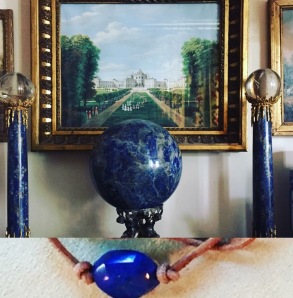
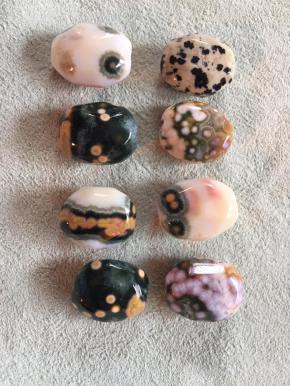
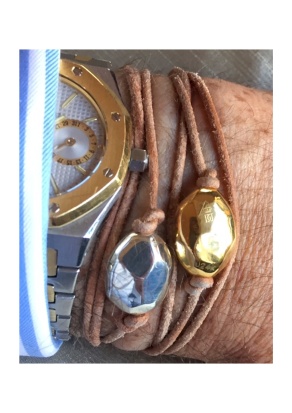
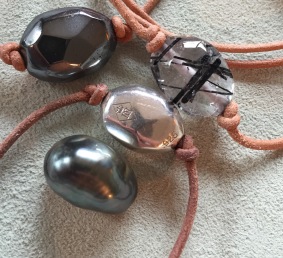


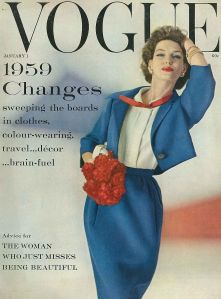
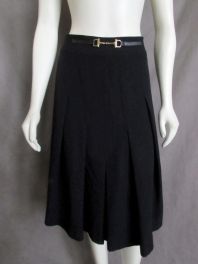

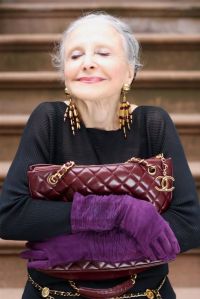
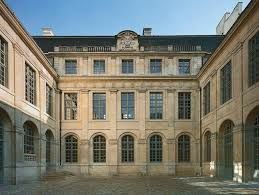




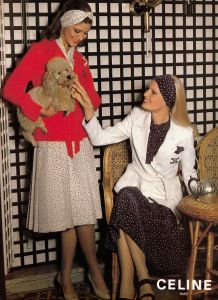
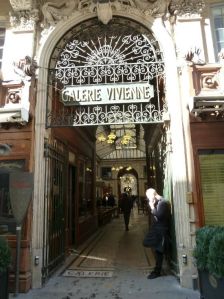
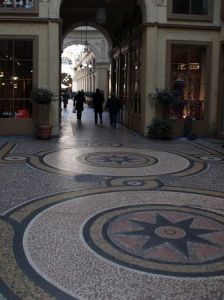


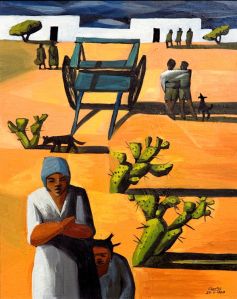
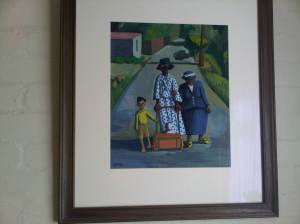
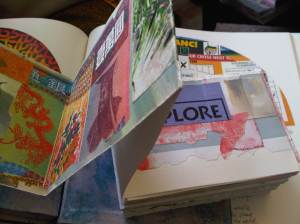
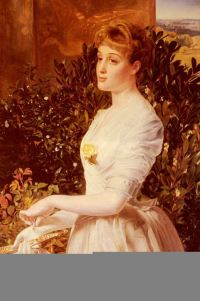
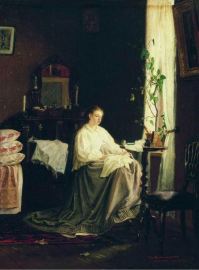
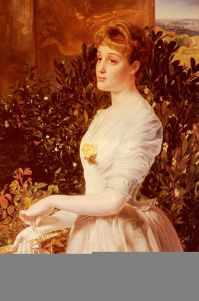
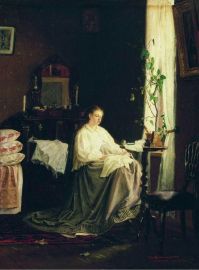
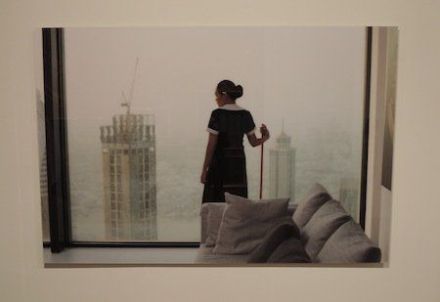


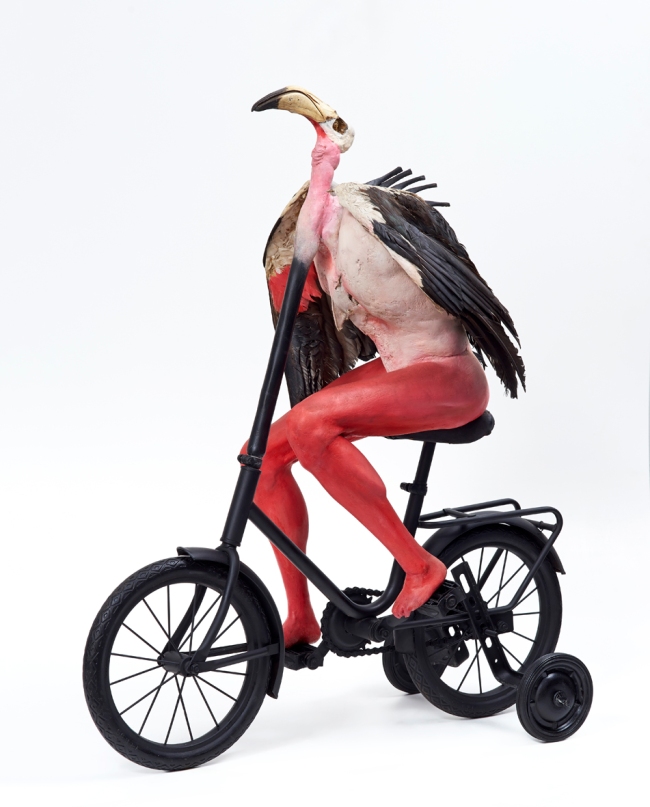



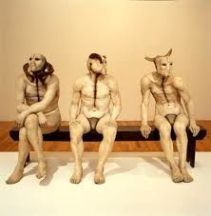







 Marianne Podlashuc
Marianne Podlashuc